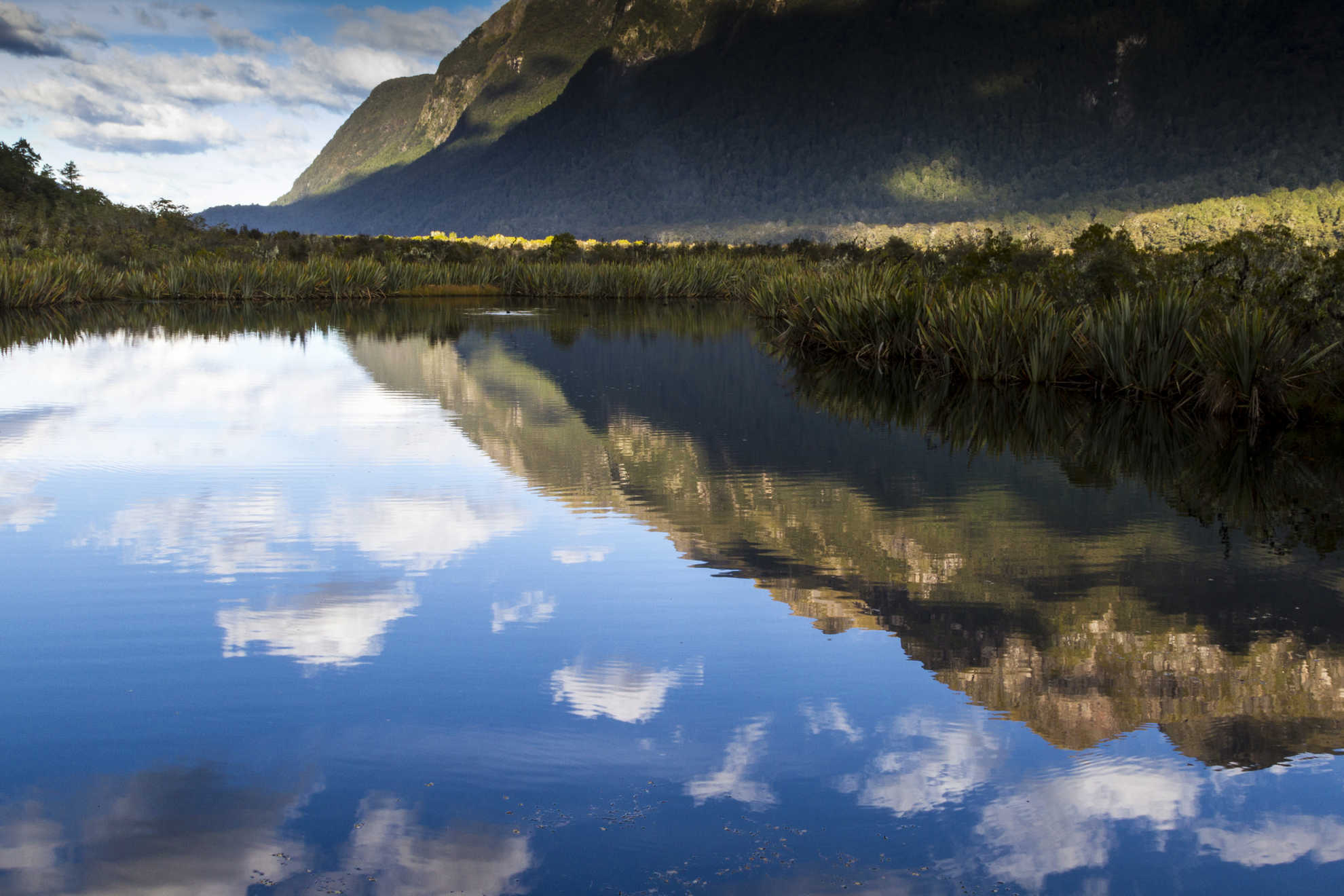Best Practice Freshwater Management
The following sections contain information about best practice freshwater management in relation to particular activities:

There are few measures that can overcome the adverse effects of damming or diverting a river. A dam will change part of the river into a still-water habitat. As a consequence, water temperatures and nutrient levels will often increase. This can promote the growth of aquatic weeds which can threaten native fish and invertebrates. Altering the natural flow and water level regime of the downstream river adversely affects aquatic ecosystems and riparian vegetation and habitat. Large storage dams can also have significant impacts on land-based plants and animals where their habitat is flooded.
There are some mitigating measures which can lessen the adverse impacts of dams on aquatic habitat, native fish and recreational interests. The main measure is to release water on a regular basis to create variations in the flow of the water body. This is important for flushing the river and removing excess sediments and weeds. Mercury has a regulatory requirement to release daily spills of water down the Aratiatia Rapids to meet recreational and tourism demands.
736245c2-6c7c-4b84-bde3-140b56672032
If the construction of a dam or reservoir is likely to disrupt the movement of sediment, then a sediment sluicing facility should be incorporated into the structure.
1cef9730-f497-4050-b8ed-70a3a22c9672
Some hydro lakes, such as Lake Benmore and Lake Hayes, are used for a diversity of activities including freshwater aquaculture, fishing, rowing and recreational boating, as well as for energy generation. Management therefore needs to balance the needs of these competing uses.
The life cycle of most native freshwater fish means that they must migrate to and from the sea. Any structure built within a freshwater environment should therefore enable fish to move upstream to allow such migration to occur. Fish passes are commonly used in association with dams, although their effectiveness is uncertain. The design of such a pass depends on the local circumstances and the type of fish affected area. Some species, such as inanga, are non-climbing.
69eb098d-96a1-4b00-87d4-11583689c321
Where culverts are used, their slope and alignment should match that of the stream, and allow sediment and debris to pass through during floods. The bottom of the culvert should be below the stream bed and the banks around the inlet and outlet protected from erosion.
a7c7265e-b568-4bf6-8864-4413d8ac02e7
You are not allowed to construct any culvert or ford in such a way that the passage of fish would be impeded, without the written approval of the Director-General of Conservation incorporating such conditions as they think appropriate.
d60fccf8-7653-45ef-af06-bcfb5c84e236
Where water is abstracted from rivers and lakes, systems to prevent fish uptake should be used such as fish screens to obstruct passage and jets of water to create turbulence. Intakes should also be sited away from areas that fish commonly inhabit such as the edge of rivers.
Urban
The development of new urban areas can have a major negative impact on freshwater bodies through the release of large amounts of sediment during earthworks and construction. As an urban area becomes more established, sediment usually becomes less of a problem, but there can be increased discharges of pollutants including organic matter, nutrients and heavy metals.
It is therefore important that urbanisation does not take place in catchments where downstream freshwater bodies and estuaries are likely to be significantly affected by increased sediment flows. When urban development does take place, careful measures need to be taken to reduce and manage sediment run-off. Erosion and sediment control plans should be prepared and approved by the council before any works are commenced. Measures to reduce sedimentation include:
- Use of sediment detention measures such as silt fences, earth bunds, sediment detention ponds and chemical sediment control (flocculation)
- Avoidance of major building works during times of the year when rainfall is likely to be heavy
- Retaining existing vegetation wherever possible and revegetating disturbed areas as soon as possible
- Limiting the size of the disturbed areas
Urbanised areas discharge large amounts of stormwater which collects on impervious surfaces such as roofs, roads and driveways. Stormwater is often directly piped into rivers or the marine area. It can transport toxic pollutants as well as sediment into freshwater bodies. The impacts of stormwater discharge can be reduced through measures such as:
- Reducing the area covered by impervious surfaces. District plans can include maximum site coverage provisions and encourage the use of permeable paving
- Using networks of swales and planted areas to reduce a filter stormwater runoff in urban areas
- Restoring wetlands
- Collecting and treating stormwater before discharge
- Using roof rainwater collection tanks
Wastewater treatment works should use the best available technology to ensure that the water discharged into the catchment contains minimal amounts of organic matter, micro-organisms and nutrients. The construction of wastewater treatment facilities needs to be adequately planned so that there is capacity to deal effectively with all waste generated by the community, and by future or seasonal growth in the area. Combined sewage and stormwater systems, which are common in older urban areas, need to be progressively replaced with separate networks, and the sewage pipes regularly monitored and maintained to prevent leakage.
Septic tanks should only be constructed in areas where the soil is suitable and where there is an adequate amount of land surrounding the property to cope with the amount of effluent likely to be generated. They also need to be regularly maintained.
-
http://www.mightyriverpower.co.nz/Generation/LakeLevels/HydroSpill/Default.aspx
-
New Zealand Society on Large Dams, 2000, , Guidelines for Resource Consents for Dams and Associated Activities, New Zealand Society on Large Dams, Wellington, available at http://www.ipenz.org.nz/nzsold/publications.htm, 23
-
New Zealand Society on Large Dams, 2000, , Guidelines for Resource Consents for Dams and Associated Activities, New Zealand Society on Large Dams, Wellington, available at http://www.ipenz.org.nz/nzsold/publications.htm, 25
-
www.doc.govt.nz/getting-involved/volunteer-join-or-start-a-project/protect-bus-freshwater-and-beaches/stream-protection/habitat-and-fish-passage/
-
Clause 42, Freshwater Fisheries Regulations 1983
Last updated at 9:42AM on April 3, 2018